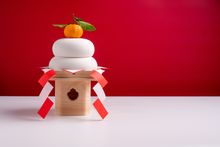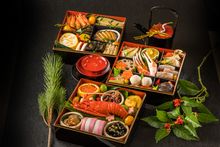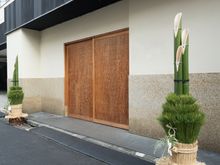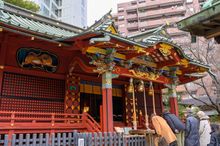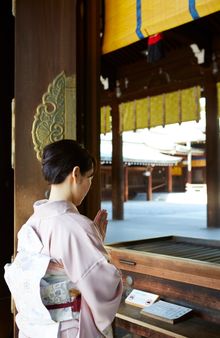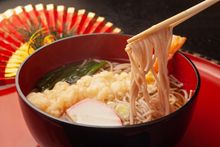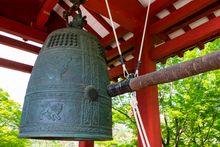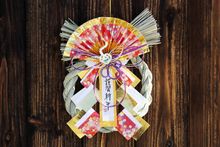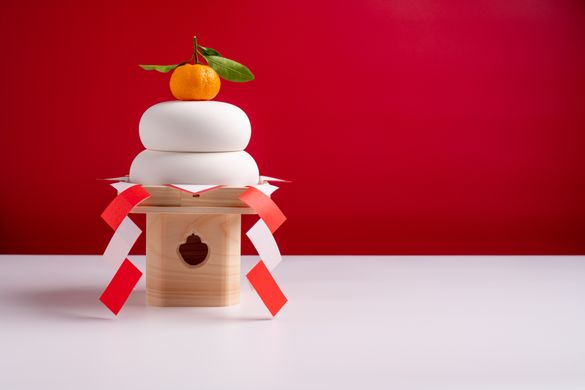 20 Dec 2021
20 Dec 2021
Tags: tokyo, Old meets New, Visit Tokyo, Visit Japan, Japan, Tokyo Tokyo, Japanese customs, Japanese culture, japanese traditions, New Year, New Year Celebrations, Temples and shrines, Like a local, live like a local

Japanese New Year (oshogatsu) is a very special time and the most important holiday in the calendar.
But the celebrations that surround it are very different from those in the western world. It is seen as a time to spend quietly at home with family and loved ones and marked by many traditional practices. Most people have some days off work (a break called nenmatsu nenshi- which translates as 'end of the year beginning of the year'), extending until 3 January and many people travel to their hometowns. Unlike the Western style noisy fireworks and count down parties, the streets become quiet and solemn. For a few days it is only the temples and shrines across the city buzzing with activity as people go to send off the old year and welcome in the new. Here is how to enjoy New Year in Tokyo like a local with 5 typical customs not to miss.
- 1. Eating Noodles- Toshikoshi Soba
It is customary on New Year's Eve to say goodbye to the old year and any misfortunes it has brought by eating toshikoshi soba (translates as 'year-crossing buckwheat noodles'). Eaten for well wishes and good luck the soba noodles are long and thin making them symbolic of long life.
- Ringing the Temple Bell- Joya no Kane
On New Year's Eve, the annual Joya no Kane event is happens at temples across Japan. The ritual involves the temple bell being tolled 108 times, beginning at midnight and continuing over the course of the entire first day of the year. The number 108 is significant in Buddhism as it represents the number of earthly desires that afflict and pain the human heart. It is said that hearing the bell ring will make those earthly desires disappear one by one on each toll of the bell, thereby cleansing us before we begin the new year. The major temple sites are discouraging crowds due to COVID-19, however some offer the opportunity to see the ceremony from the comfort of your home. For example Zojoji Temple event will be live streaming on 31 Dec. LINK
- Traditional New Year Decorations
There are various types of New Year decorations in Japan linked to the Shinto religion. If you visit Tokyo around this time you will see many of these 3 types of displays.
Kadomatsu (pine gate)-entrance way decoration- These are placed at building entrances and are made from
green bamboo poles, pine needle branches, and plum tree sprigs (symbolising prosperity, longevity, and steadfastness). They are said to be the temporary dwelling places of gods who visit to bless humans. These stunning arrangements are usually burned after January.
Shimekazari-over entrance decoration- Made from a sacred straw rope (called shimenawa), with pine and bitter orange (symbolising prosperity) and other ornaments, these are hung above doors and entrances to welcome the gods of good fortune and ward off evil spirits.
Kagami mochi (Mirror-rice cake)- offering
These usually consist of two large round mochi (rice cakes), the smaller placed on the larger, with a bitter orange and a leaf on top, these are placed on the household Shinto altar.
- First visit to the Temple or Shrine- Hatsumode
Hatsumōde is the first Buddhist temple or Shinto shrine visit of the Japanese New Year.
Many people visit a shrine or temple late at night on New Year's Eve and observe the custom of hatsumode as the clock ticks past midnight, and January 1 arrives. Others visit on New Year's Day, January 2, or January 3. Meiji-jingu Shrine and Sensoji Temple are two of Tokyo's top hatsumode spots. In order to reduce the spread of COVID-19 this year many temples are requesting visitors to consider delaying their visit to a less crowded period, to take their temperature at home prior to visiting and to wear a mask when visiting. Tokyo's oldest temple Sensoji in Asakusa encourages people to monitor the level of crowds before visiting from a live webcam LINK
- New Year Traditional Food (Osechi Ryori)
One of the beloved customs around the new year is the preparation of food to be consumed over the New Year break. In the old days the food for this period needed to last for the first 3 days of the year without refrigeration. Typically, the dishes are very sweets or very salty in order to preserve them. Much pride is taken in the preparation and presentation of these dishes. The colours and arrangement and each part represents various aspects of good fortune.
Images - Click here
Please visit the Official Tokyo Guide for COVID-19 updates: LINK
